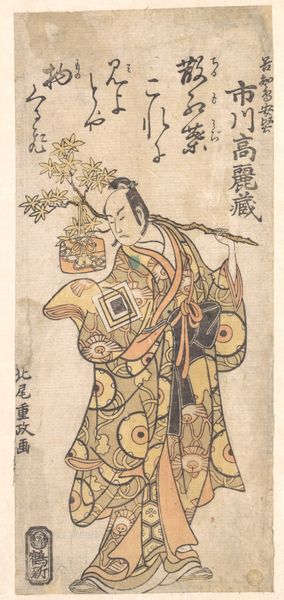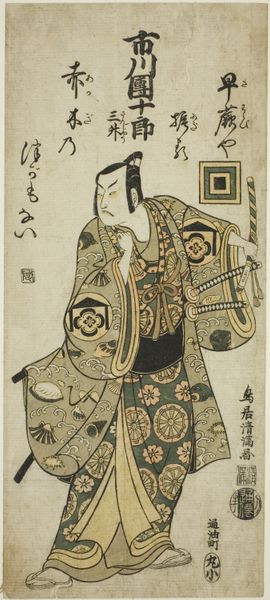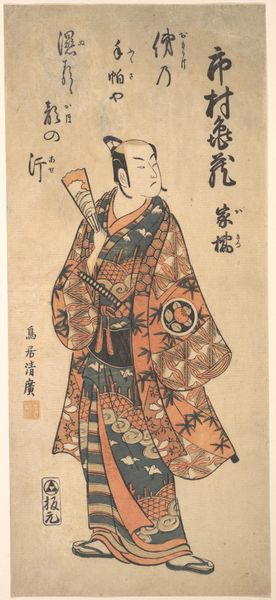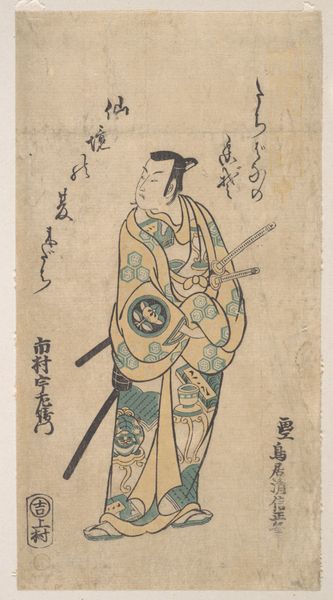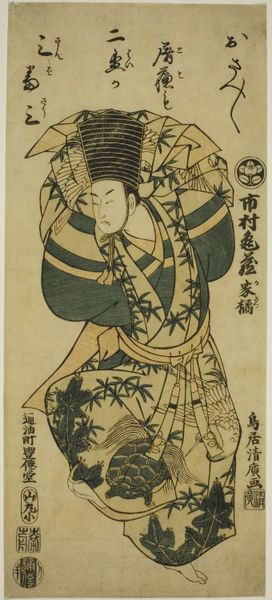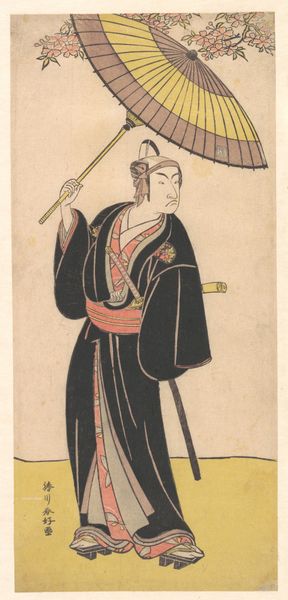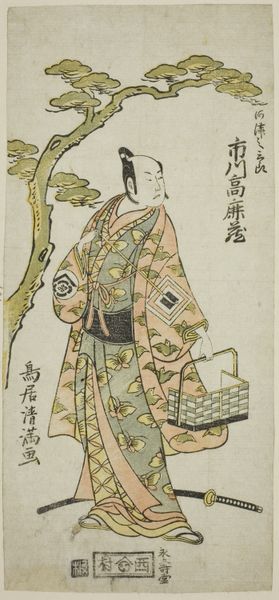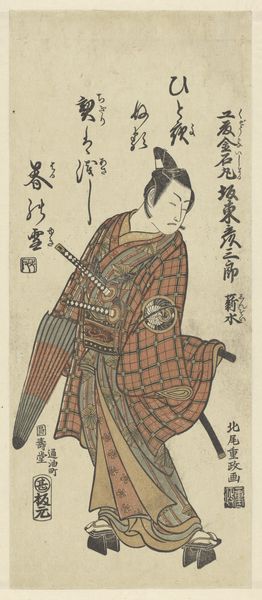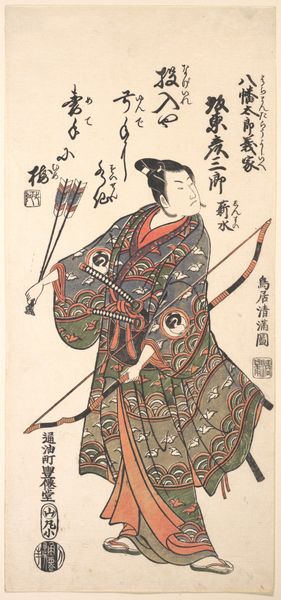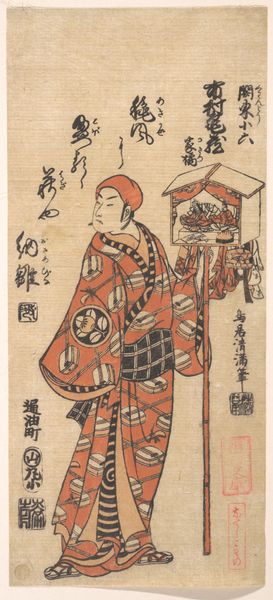
The Actor Ichikawa Raizo I as Minamoto no Yoshitsune in the play "Nihon ga Hana Hogan Biiki," performed at the Nakamura Theater in the eleventh month, 1761 1761
0:00
0:00
print, woodblock-print
#
portrait
# print
#
pen sketch
#
asian-art
#
ukiyo-e
#
figuration
#
woodblock-print
#
orientalism
Dimensions: 11 3/4 × 5 1/2 in.
Copyright: Public Domain
Curator: Here we have Torii Kiyomitsu's woodblock print from 1761, a striking image of the actor Ichikawa Raizo I in the role of Minamoto no Yoshitsune. What are your initial impressions? Editor: Stark elegance comes to mind. The lines are so precise, so controlled, creating a powerful, almost monumental presence despite the work's relatively small size. There is a certain aloofness to the character's stance as well. Curator: The composition relies heavily on linear perspective and flattened planes, typical of ukiyo-e prints. The layering of geometric patterns on the kimono also creates a visual tension with the figure's pose. Note the careful use of line and color to define form, with the patterns conveying details and emotions. Editor: Yes, that costume, for instance – I think its repeating geometric motifs evoke both stability and the layered responsibilities Yoshitsune carries, with an aloof strength as a revered, if tragic, hero in Japanese history and folk legend. The fan held aloft could speak to a marshalling of forces, perhaps. Curator: Symbolism aside, there's a clear aesthetic focus on simplification and abstraction. The planes of the face, the minimal shading – it all contributes to an iconic representation rather than a realistic portrayal. See how his expression seems to communicate stoicism above all else, enhanced through formal construction with deliberate lines and geometric shaping. Editor: The drama inherent in Kiyomitsu's use of simplified color blocking enhances an expression of stoic dignity that connects across time, even to viewers unfamiliar with the play's original context. We can still feel its gravitas. Curator: Absolutely. It offers insight into the structural concerns dominating much art production in this period. Thank you for highlighting these symbolic aspects. Editor: And thank you for guiding me toward its pure aesthetic.
Comments
No comments
Be the first to comment and join the conversation on the ultimate creative platform.
